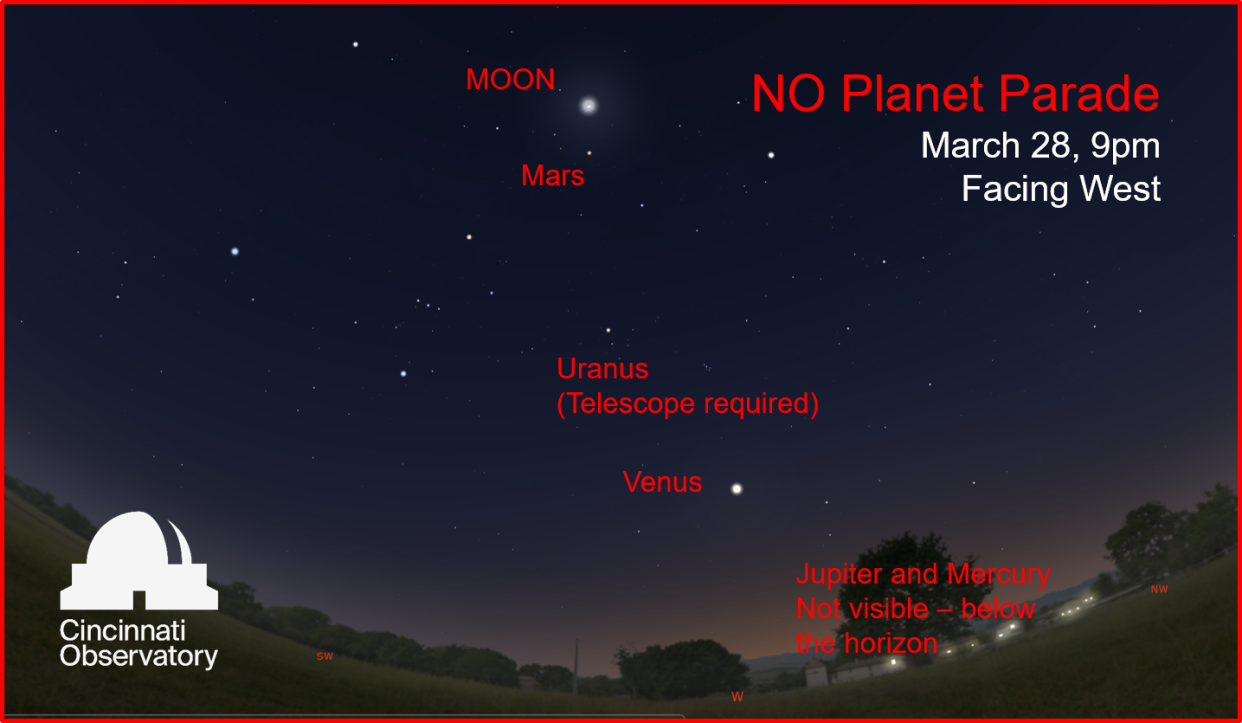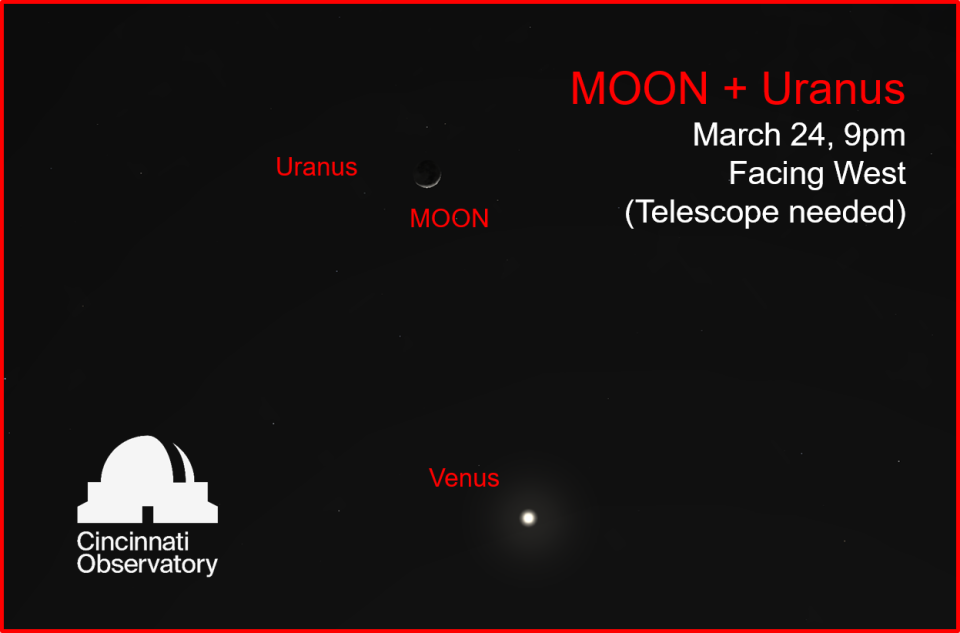Hold your horses. Expert astronomer says this 'planet parade' is kinda bogus

You may have heard that you should look for a "planet parade" of five solar system objects coming to the sky on March 28. "Mercury, Jupiter, Venus, Uranus and Mars will be visible at the same time that night," some may say. Sound too good to be true? It is.
While it is true that the planets Mercury, Jupiter, Venus, Uranus and Mars will be lined up in the sky on March 28, there is a huge problem: you won't see three of them. Mercury and Jupiter will be too low in the sky after sunset and will quickly set below the ground. And to see Uranus, you need a telescope.
Which planets WILL you be able to see on March 28?
So what will you see when you look up on March 28 after sunset? A dazzlingly bright star-like object, so bright you'll think it's a UFO. That will be Venus. High in the southwestern sky, you'll see a first-quarter moon just above the red planet Mars. This is one of those times where what looks good on paper does not match reality and is certainly not a "planet parade."

Instead: Look for Uranus on March 24 🔭
But something even cooler will be happening on the evening of March 24. Just after sunset, you'll find Venus, Mars and the crescent moon. If you have a small telescope, aim it toward the left side of the moon. Move the scope further to the left about 1 degree and then you may see a little blue-green disc of light. That will be the planet Uranus, which will be in conjunction with the moon on March 24. Now that will be cool!
This article originally appeared on Cincinnati Enquirer: Expert astronomer says this March 28 'planet parade' is kinda bogus

